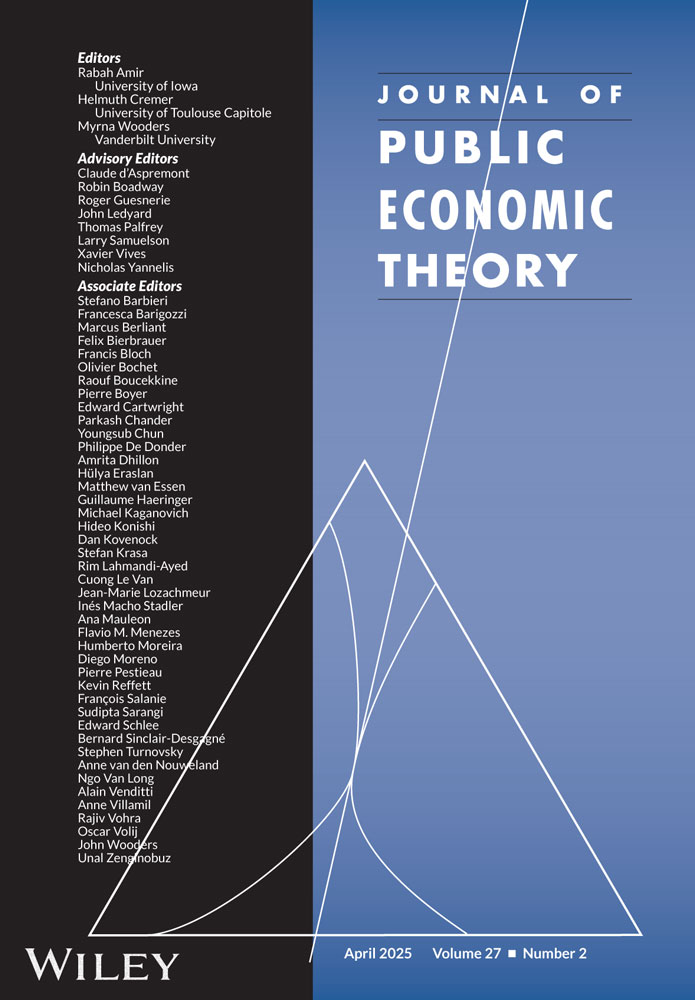Does Equal Income Maximize Social Welfare When Multiple Pure Public Goods Are Privately Provided?
ABSTRACT
This paper analyzes the relationship between income distribution and social welfare when multiple pure public goods are privately provided. With a single public good and identical preferences, an increase in income inequality raises social welfare when it reduces the set of contributors so equality cannot be social optimal. We explore how this result is modified when there are multiple privately-provided public goods. It is shown that regions of neutrality alternate with regions of non-neutrality as income distribution is varied. In particular, in the setting of multiple privately-supplied public goods with non-idential preferences a region of non-neutrality emerges when individuals contribute to different public goods or when only one individual contributes. Moreover, social welfare will always be maximized by an income distribution located in a region of non-neutrality. This result implies that social welfare has local maxima at income distributions with inequality as well as around the equal income distribution. We also explore how the optimal extent of inequality is dependent on preference parameters.
Open Research
Data Availability Statement
The data that support the findings of this study are available from the corresponding author upon reasonable request.




